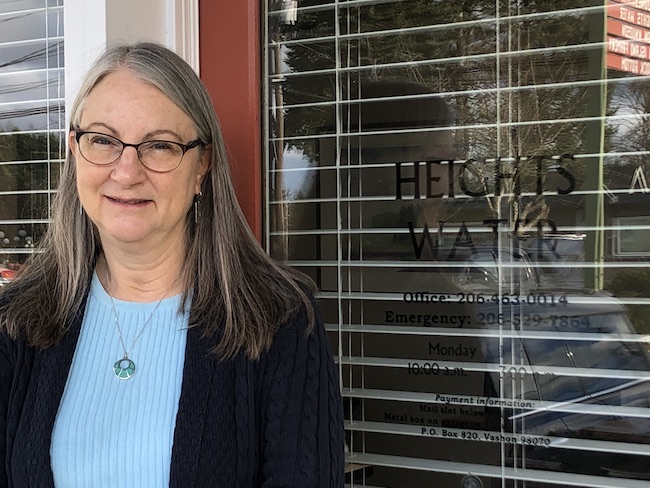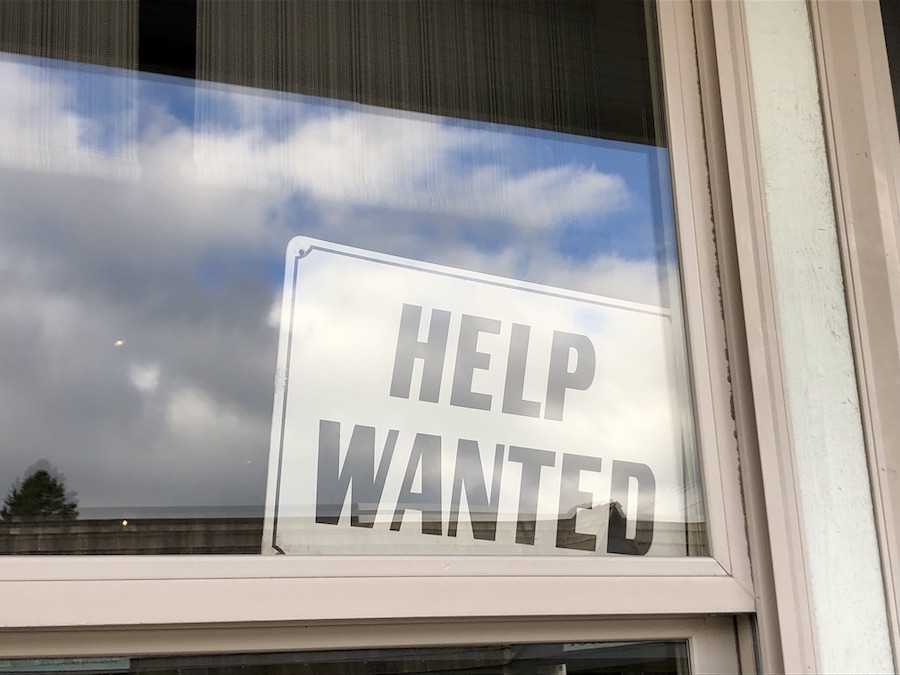Brace yourselves for the “grey tsunami” that’s about to swamp the nation’s water industry. The
US Environmental Protection Agency sounded the alarm in a December 2021 report : “One of
the major challenges facing our nation is the critical and unprecedented staff shortage in the
water workforce that operates and maintains our essential drinking water and wastewater
infrastructure. In the next five to ten years, water sector workers will be eligible to retire at levels
that will stress our ability to operate this critical infrastructure.”
Vashon is already feeling that stress. Several veteran baby boom operators are making for the
exits, the replacement pipeline is dangerously dry, and our plan to avert the looming crisis is
“mostly hand-wringing at this point,” says Doug Dolstad. The long-time operator for Westside
Water Association, Dolstad is currently helping Westside look for his successor.
We need a better strategy to recruit, train and retain quality water operators. And we need it now.
The recruiting and training pieces are probably the easiest. Water operator is a good paying job.
Operators at Water District 19, the Island’s largest and only union shop, make between $50,000
and $100,000-plus , depending on their experience and certification level. They also enjoy full
medical and dental benefits for themselves and their families. Compensation is comparable
statewide (at $50,000-$90,000-plus), and the barrier to entry is low.
“You just need a high school diploma and some kind of water-related experience” to get certified,
says Bill Bernier, who runs the Operator Certification and Training Section for the State
Department of Health (DOH). Bernier adds one caveat, but before we go there follow me down
this certification rabbit hole for a sec.
There are two water system categories in Washington State: water distribution and water
treatment. Each category features several certification levels . The cost to apply for and take a
certification exam is $185. Related study materials and classes can run anywhere from $0 to
$400, depending on the certification level. Some water systems cover those costs, a smart
recruiting strategy. But getting the necessary experience can be a pesky “Catch-22,” admits
Bernier.
You know how it goes: can’t get the experience without the certification, can’t get
certified without the experience. DOH is working the problem. Its Operator-in-Training
program, for example, lets applicants with the necessary education take a certification exam. If they pass they get “operator-in-training” status, which means they come to job interviews pre-
certified. That gives prospective employers confidence that, after the required on-the-job training,
they will have a fully certified operator. “It’s a great get-in-the-door tool,” says Bernier, who has a
few more potential solutions up his sleeve.
Schools are a perfect place to cultivate future water operators. John Erickson is the new Career
and Technical Education (CTE) Director for Vashon Island Schools. The CTE program he
oversees at Vashon High School offers classes in everything from jewelry making to journalism.
Why not water operator? There’s a “demonstrated community need” which, explains Erickson, is
a necessary first step for adding a new CTE course. There’s a readymade curriculum thanks to
the state of Alaska’s Introduction to Small Water Systems Correspondence Course . And general
managers at Water District 19 (John Martinak) and Heights Water (Margaret Wessel) are willing
to offer hands-on training for interested high schoolers. Erickson, Martinak and Wessel will be
meeting to discuss the possibilities. A partnership between Vashon schools and water systems
would be a pipeline-filling dream.
Attracting and retaining qualified water operators is the trickier part of this puzzle. “Our
operators have to be available 24/7 when they’re on call,” explains Margaret Wessel. “It’s
impossible to commute to Vashon to do this work. They have to live on the Island. And the cost
of living here is pretty high.” That harsh economic reality recently cost Water District 19 one of
its junior operators.

Economics weren’t a consideration when Doug Dolstad got into the water business back in the
1990s. Island living was cheaper back then and Dolstad had a stable housing situation. “I was
fortunate that way,” he says. “I didn’t have the same expenses that most people confront. I could afford to delve into this water thing and a business grew around me.”
Those days are gone. These days, affordable housing is an oxymoron and inflation is its evil twin.
For water companies to keep talent they have to pony up. Higher wages and better benefits
means one thing, says John Martinak: “People are going have to start paying more for their water
as this Island gentrifies. Just like we have to start paying more for everything.”
At Heights Water, at least, customers get it. Last year, the Heights’ board raised rates, in part to
cover a salary bump for its two operators—one full-time, one part-time. “People need to be paid
enough to live on the Island” is how the board explained the hike, says Wessel. “And we really didn’t hear any complaints. Everybody understands that it’s really important to have water, and
people are willing to pay for it if that’s what it takes.” And if they can afford to.
Part of any strategic solution to the water operator shortage may require some discussion about
the structure of the water business itself. Right now there are about 150 community water systems
on Vashon-Maury Island: seven large and 14 small Group A systems, and 134 smaller Group B
systems. Each of them needs some kind of operator, either a full-time or part-time certified
professional, or in the case of many smaller systems a capable volunteer. Given the level of
demand and the scarcity of both operators and affordable homes, does it still make sense for
every Island water system to maintain its own operations team?
“If everybody pooled their resources,” ventures DOH’s Bill Bernier, “you’d get that economy of
scale so you wouldn’t have all these small systems trying to get enough money to attract and
retain an operator.” What if local water providers, large and small, pitched in to support a
common pool of certified, Island-wide operators? A kind of Vashon Water Service Company?
(Doug Dolstad tried a version of this for a time with his Island Water Management, Inc., which
serviced Westside, Maury Mutual and Dockton water systems over the years.) Each system’s share
of operator salaries and benefits could be based on the size of its customer base. Over time,
equipment and processes could be standardized and easily shared, and a pipeline of younger
operators could get trained and mentored and primed to step in when veterans retire.
Could this more collaborative model save us from the grey tsunami? Or from a corporate
takeover of Vashon’s water systems and water rights? “Consolidation is a viable option,” says Bill
Bernier. It may be a tough sell. But it’s worth a conversation.


Eye-opening report and great photo!